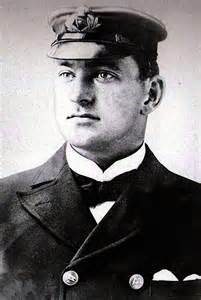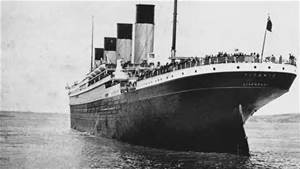The Last Man to Know
/George Rowe, 32, had served in the Royal Navy and the merchant marine before working aboard White Star Line’s Oceanic. In April 1912, Rowe signed on to be Quartermaster of the Titanic.
On the night of April 14, Rowe was given the task of standing watch on the auxiliary bridge at the far end of Titanic’s stern, on the poop deck. Although the temperature had dropped considerably, the absence of wind kept him from getting too cold as he paced back and forth on the open catwalk.
He noticed what sailors called “whiskers” around the deck lights—thousands of tiny ice splinters reflecting off the lights. He knew the bright colors they gave off were a sign of ice ahead.
Rowe felt a slight change in the motion of the ship. Then he noticed what at first appeared to be a “full-rigged ship, with sails set,” passing close to the starboard side and towering over the bridge where he stood. He soon realized the shape was an iceberg. It passed by and disappeared.
Titanic began venting steam shortly afterward, but Rowe remained at his watch. He had no way of knowing the iceberg had damaged the ship, and he couldn’t see the activity on the Boat Deck as the lifeboats were lowered.
The stern end of Titanic, as seen in Queenstown, Ireland on sailing day
When a lifeboat half-filled with passengers drifted by, the startled Quartermaster telephoned the bridge to ask if they knew about it. Answering the phone, Fourth Officer Boxhall asked who was calling. When Rowe explained, Boxhall realized that in the excitement no one had informed the man on watch in the back of the ship of the emergency. He told Rowe to come to the bridge immediately and bring a box of distress rockets stored in a locker.
Rowe and Boxhall spent the next hour firing rockets every five minutes in an attempt to signal a nearby vessel. They used a Morse lamp in between firing rockets. It was only when ordered by Captain Smith to take charge of Collapsible C that Rowe left his post.
George Rowe returned to work aboard the Oceanic, and joined a hospital ship during World War I. He then worked in a ship repair yard until well into his 80s. He died at the age of 91.



